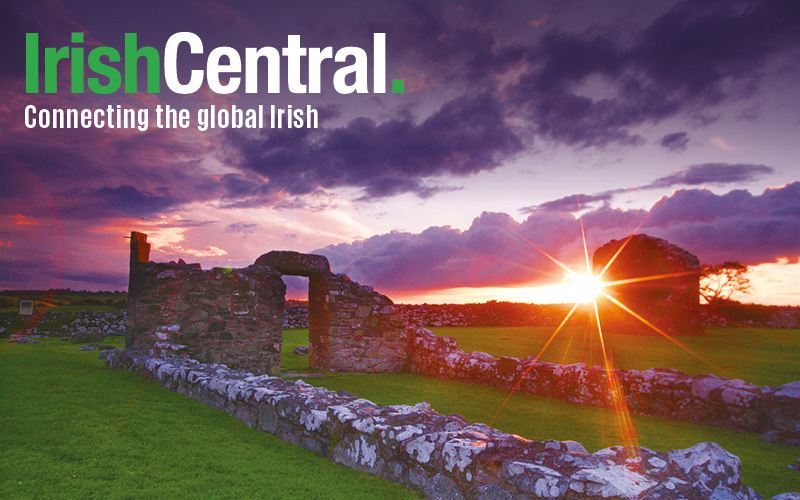Among 50 personal accounts of the 1916 Easter Rising, there remains only one that archivists and historians have been unable to identify.
RTÉ is seeking the public's help in identifying one unnamed contributor found in a group of first-hand accounts of the Rising.
The previously unseen and unheard video and audio accounts are featured in a new online interactive map of Dublin City, giving powerful and insightful eye witness testimonies of the events from 30 Dublin locations.
The map sources witness accounts from the RTÉ archives, including interviews with a wide range of those involved in the Rising, to build a vivid picture of what was happening across Dublin city and beyond during Easter Week 1916.
Thanks to the archives we can hear from members of the Irish Volunteers, the Citizen Army, Cumann na mBan, the British Army, the Dublin Metropolitan Police and ordinary citizens of Dublin. However, there is one man in particular who the experts have been completely unable to place.
Known only as a “jarvey” who was at Fairyhouse racecourse on Easter Monday 1916, the man featured in the video below speaks of narrowly avoiding a bullet as he made his way back into the city.
"When I went into Dublin I was halted at the barricade and could go no further,” he said in his 1962 RTÉ interview.
“Because if you did go any further, you could run the risk of a sniper. You'd be shot. And a bullet did whiz by me forehead at the Broadstone."
Read more: Liam Neeson's 1916 Rising series to reach record number of US stations (VIDEO).
Eager to discover his name, RTÉ is calling on the public to help. Can you notice anything familiar about him?
All of the featured interviews were recorded in the 1950s and 1960s with thanks to a little bit of foresight by RTÉ. While some of them have been shown on RTÉ in recent years, the majority of them are now publicly available for the first time on the interactive map.
“We are genuinely excited about sharing these incredible and very vivid personal stories from the RTE Archives as part of RTÉ’s 1916 program. To see and hear these men and women describe their experiences adds a whole new dimension to our understanding of the events of 1916,” said Glen Killane, Managing Director, RTÉ Television.
“That we can make these stories easily accessible online, through RTÉ.ie and through the RTÉ Archives website underlines the valuable role played by digital in connecting us in a very real way to the people and events of 1916.”
The personal accounts feature some remarkable stories, from a tale of a two-year-old child being shot while he was in his mother’s arms, to the history of John “Blimey” O’Connor, a member of the Kimmage Garrison and one of the many Irish Volunteers who had come from England and Scotland, who entered the GPO on Easter Monday.
In this video we see Min Ryan, the sweetheart of Seán MacDiarmada, who, along with her younger sister Phyllis, visited Seán while he was a prisoner in Kilmainham Gaol on the eve of his execution.
And here is the account of Roddy Connolly, who recalls the last time he saw his father, James Connolly, one of the Rising leaders, during Easter Week. He was interviewed for the RTÉ Television project “Portraits 1916” on January 9, 1966.
“In the 1950s and ‘60s, RTÉ showed great foresight in recording the recollections of living participants and witnesses to the events of Easter week 1916 for radio and television. The collections have been carefully preserved by the RTÉ Archives over many decades,” said Bríd Dooley, Head of RTÉ Archives.
You can see the full list of videos here.
Also released last week was an RTÉ collaboration with Boston College and Century Ireland in the form of a real-time online exhibition.
The online exhibition features previously unseen archival images and footage, as well as specially commissioned articles, which reveal the hidden stories of 1916.
Since 2013, Boston College has been working with RTE and the National Cultural Institutions in Ireland to produce a real time online historical newspaper called Century Ireland.
Read more: Eyewitness to 1916: Young Irish female fighter in the GPO tells her story.
The site features a series of features relating to 1916 including the destruction of city, the women of 1916, the lead up to the rebellion, the British and 1916; a series of pictorial galleries showcasing images from 1916; and coverage of all the main people and places of 1916 with specially commissioned films about the signatories and key historical locations.
“Century Ireland has been providing an unrivaled online catalogue through the decade of centenaries with fascinating real-time news reports and other material on the events of 100 years ago,” said Minister for Arts, Heritage and the Gaeltacht, Heather Humphreys TD at the launch of the site in the National Library of Ireland on January 26.
“The archival material from the Rising period and its aftermath is particularly fascinating. This site is another great addition to the wide array of digital material coming online as part of Ireland 2016 which is helping to bring our history to the widest possible audience.”
You can read more on the centenary here.




Comments